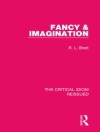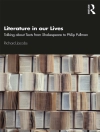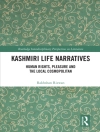This collection of essays centres on
Double Falsehood, Lewis Theobald’s 1727 adaptation of the “lost” play of Cardenio, possibly co-authored by John Fletcher and William Shakespeare. In a departure from most scholarship to date, the contributors fold
Double Falsehood back into the milieu for which it was created rather than searching for traces of Shakespeare in the text. Robert D. Hume’s knowledge of theatre history permits a fresh take on the forgery question as well as the Shakespeare authorship controversy. Diana Solomon’s understanding of eighteenth-century rape culture and Jean I. Marsden’s command of contemporary adaptation practices both emphasise the play’s immediate social and theatrical contexts. And, finally, Deborah C. Payne’s familiarity with the eighteenth-century stage allows for a reconsideration of
Double Falsehood as integral to a debate between Theobald, Alexander Pope, and John Gay over the future of the English drama.
Table of Content
Introduction; Fiona Ritchie.- Believers versus Skeptics: An Assessment of the Cardenio/Double Falsehood Problem; Robert D. Hume.- The Jolt of Jacobean Tragicomedy:
Double Falsehood on the Eighteenth-Century English Stage; Diana Solomon.- Ghostwriting: Lewis Theobald’s
Double Falsehood as Adaptation; Jean I. Marsden.- Textual Skirmishes and Theatrical Frays: Putting
Double Falsehood Back in the Eighteenth Century; Deborah C. Payne.- Bibliography.- Index.
About the author
Deborah C. Payne is an Associate Professor of Literature at American University. She specializes in seventeenth- and eighteenth-century drama, theatre history, and performance theory. Her publications include
Cultural Readings of Restoration and Eighteenth-Century English Theatre, co-edited with J. Douglas Canfield;
The Cambridge Companion to English Restoration Theatre; and
Four Restoration Libertine Plays. Recently she completed
The Commodiluxe Stage: A New History of Restoration Theatre, 1660-1700.












